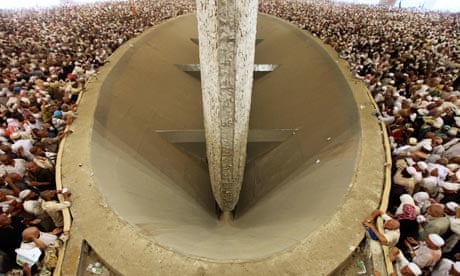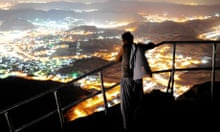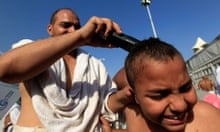The emir of Mecca, Prince Khalid al-Faisal, admitted today that "a lot of concerns" remained over the hajj.
At a press conference in Mina, one of the holy sites of the Islamic pilgrimage, he said many issues needed resolving despite the billions of dollars invested in the infrastructure of the world's largest annual religious pilgrimage.
It was a rare admission from the Saudis that they have not yet fully dealt with issues of overcrowding, cleanliness and hygiene.
Earlier this month, the prince had hailed the development of the holy sites as a "resounding success".
Today, however, he appeared to contradict himself. "We have a lot of concerns about people sleeping outdoors, the unofficial hajis [pilgrims], cleanliness and hygiene of the holy places," he said.
"All these need to be rethought as to how they can be dealt with better, but the most important issue, which the custodian of the holy mosques [King Abdullah bin Abdul Aziz] himself has spoken about, is the issue of overcrowding along the Mecca-Mina route and in the haram [Grand Mosque] area itself.
"This is our priority – both mine and the custodian of the holy mosques himself."
His remarks were made just yards from the King Abdul Aziz Road, where thousands of pilgrims squatted on the streets, sometimes with nothing more than pieces of cardboard to protect them from the sun.
Thousands were also fulfilling one of the final rituals of the hajj, the stoning of the devil on the Jamarat Bridge, which cost billions of dollars.
At times, the smell surrounding the holy sites – especially Arafat, Mina and Muzdalifah – has been unbearable.
In addition, the department of civil defence has issued numerous warnings to pilgrims, urging them to stay away from the Grand Mosque and warning of heavy traffic along key routes, which are already creaking under the large volume of cars, buses and coaches. Journeys of 10kms can take up to six hours, sometimes more.
When asked about future construction projects to deal with the increasing number of pilgrims attending the hajj, the prince said the authorities would not rule anything out as far as expansion and development were concerned.
He also said it was impossible to put a price tag on how much it cost the kingdom to host the hajj, saying no budget was big enough.
Today, millions of Muslims return to Mecca for their final circuits of the Ka'bah before travelling home.




